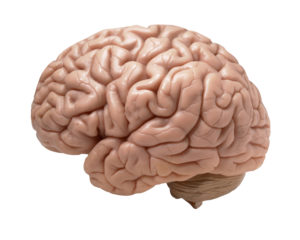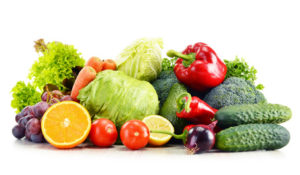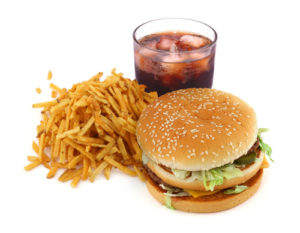It seems that currently it is a case of buyer beware - because supplements may NOT even contain the desired ingredients! Excerpts from two articles from the NY Times that discuss this issue:
Knowing What’s in Your Supplements
Last week, the New York State attorney general’s office uncovered another example of what appeared to be widespread fraud in the dietary supplement industry. The office accused four of the country’s biggest retail stores of selling herbal products that in many cases were contaminated or did not contain any of the herb listed on the label.
For many readers, the news raised an urgent question: Which supplements can I trust? Experts say that there is no guarantee that supplements will do what they say they do, or that they are safe or won’t interact with any medications you may be taking. But there are several steps people can take to give themselves some reassurance that at least some of the supplements they buy actually contain what they advertise on the label – and nothing else.
For one, you can look for products that receive a seal of approval from the United States Pharmacopeial Convention, an independent, nonprofit organization of scientists that sets high standards for medicine, food ingredients and dietary supplements. The United States Pharmacopeia has a voluntary program through which supplement companies can have their products and facilities tested and reviewed. Companies whose supplements meet the group’s standards – which ensure purity, identity and potency, among other things – are allowed to carry an official “USP Verified” seal on their labels. The group maintains an evolving list of the brands that have received its seal and the places where they can be purchased. That list can be found on the group’s website.
But keep in mind that there are some companies that print the letters “USP” on their labels without the official USP Verified seal... But it is not the same as the distinctive black and yellow “USP Verified” seal, which means that the product has actually been vetted by the United States Pharmacopeia. Only a handful of brands carry the seal. A few of them are Nature Made, Kirkland Signature and TruNature, for example.
Another nonprofit group that independently certifies some supplements and their ingredients is NSF International. The group certifies such supplements as fish oil and multivitamins. It also has an “NSF Certified for Sport” program that is especially useful for athletes and other people who use sports supplements such as protein powders, amino acids and creatine. These products have been found in some cases to be deliberately spiked with steroids and prescription drugs. The blue and white NSF seal means that a product has been independently vetted to ensure that it is not adulterated and that it contains the ingredients listed on its label.
Lastly, there are at least two independent laboratories that routinely test a range of dietary supplements and then publish full reports with their findings. One is ConsumerLab.com, which frequently tests products and maintains an archive of reports on its website. Another testing company is LabDoor. On its website, you can find reports and rankings of protein powders, fish oil, probiotics, vitamin D and multivitamins. Both websites charge a fee for access to their reports.
Consumer testing groups such as these are necessary, many experts say, because the 1994 federal law that applies to supplements does more to protect companies than consumers. That law – the Dietary Supplement Health and Education Actor DSHEA – was spearheaded by legislators with strong financial ties to the industry. It allows companies to attach general health claims to their products without providing evidence of their effectiveness, and it protects supplements from the strict premarket approval rules that apply to prescription drugs.
Although companies are required to follow an established set of manufacturing practices, policing the industry has been a special challenge for the federal government because DSHEA essentially created an environment in which companies operate on the honor code.
From the NY Times: What’s in Those Supplements?
The New York State attorney general’s office accused four national retailers on Monday of selling dietary supplements that were fraudulent and in many cases contaminated with unlisted ingredients.
The authorities said they had run tests on popular store brands of herbal supplements at the retailers — Walmart, Walgreens, Target and GNC — which showed that roughly four out of five of the products contained none of the herbs listed on their labels. In many cases, the authorities said, the supplements contained little more than cheap fillers like rice and house plants, or substances that could be hazardous to people with food allergies.
At GNC, for example, the agency found that five out of six samples from the company’s signature “Herbal Plus” brand of supplements “were either unrecognizable or a substance other than what they claimed to be.” In pills labeled ginkgo biloba, the agency found only rice, asparagus and spruce, an ornamental plant commonly used for Christmas decorations.

 Another study that links following the Mediterranean diet with a beneficial health effect - this time a lower risk of ischemic stroke. Unfortunately, it did not seem to lower the risk of hemorrhagic stroke.
Another study that links following the Mediterranean diet with a beneficial health effect - this time a lower risk of ischemic stroke. Unfortunately, it did not seem to lower the risk of hemorrhagic stroke. Well DUH, of course eating organic foods lowers pesticide exposures. And yes, it can be measured in your body. So, as previous studies have shown, replacing regular fruits and vegetables (conventionally grown) with organic fruits and vegetables will lower your exposure to pesticides and the levels in your body.
Well DUH, of course eating organic foods lowers pesticide exposures. And yes, it can be measured in your body. So, as previous studies have shown, replacing regular fruits and vegetables (conventionally grown) with organic fruits and vegetables will lower your exposure to pesticides and the levels in your body. Bottom line: try not to eat processed sweetened foods or drink sodas because high intake is linked to type 2 diabetes. Several studies point the finger in particular to high fructose corn syrup, which is the most frequently used sweetener in processed foods, particularly fruit-flavored drinks and soda. An earlier 2013 study from Europe found that drinking one 12-ounce sugar-sweetened soft drink a day can increase the risk of type 2 diabetes by 22%. Instead eat real whole foods like fruits and vegetables. From Medscape:
Bottom line: try not to eat processed sweetened foods or drink sodas because high intake is linked to type 2 diabetes. Several studies point the finger in particular to high fructose corn syrup, which is the most frequently used sweetener in processed foods, particularly fruit-flavored drinks and soda. An earlier 2013 study from Europe found that drinking one 12-ounce sugar-sweetened soft drink a day can increase the risk of type 2 diabetes by 22%. Instead eat real whole foods like fruits and vegetables. From Medscape: